In C. J. Maynard’s 1883 Manual of Taxidermy, the naturalist writes that the key to convincingly ‘resurrecting’ a creature is finding “the exact poise, the swell of the muscle, the exact shape of the eye which will give life and beauty to the subject in hand.”
Clearly, Maynard knew his stuff when it came to stuffing. But what he didn’t know was that, in 1954 (the exact and coincidental mid-point between the publication of his manual and this magazine) the last ever Jaguar XK120 would come growling off a production line in Coventry.
And this nimble roadster, while admittedly a beast of a different nature, has recently been brought back to beautiful life itself, true to the taxidermist’s time-tested, artfully-applied principles. Resurrected, renovated and electrically reanimated, it’s just one of several cars a clutch of modern Maynards are restoring to glory at Lunaz Design.

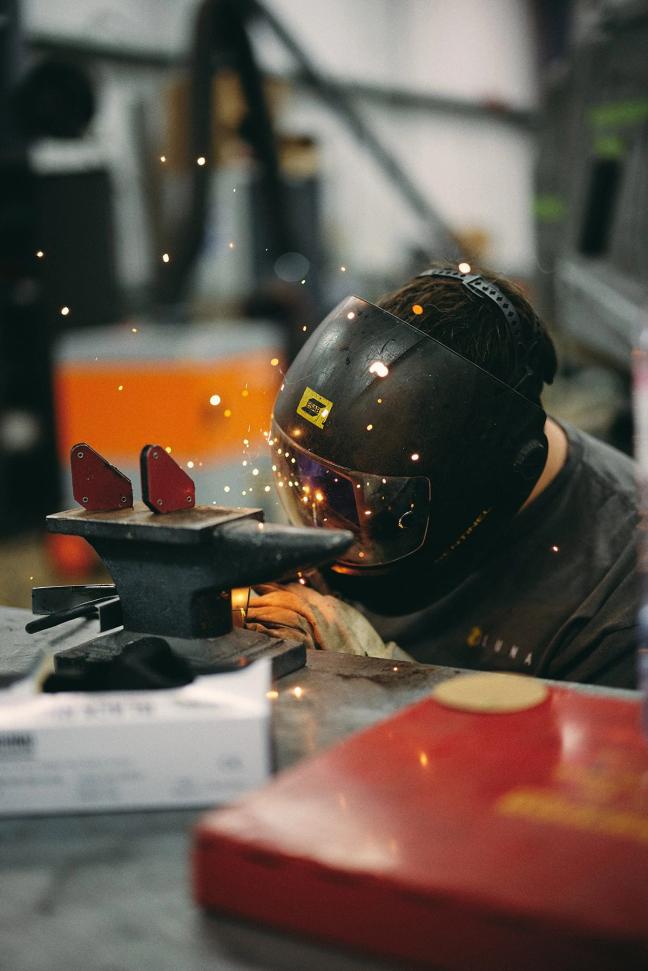
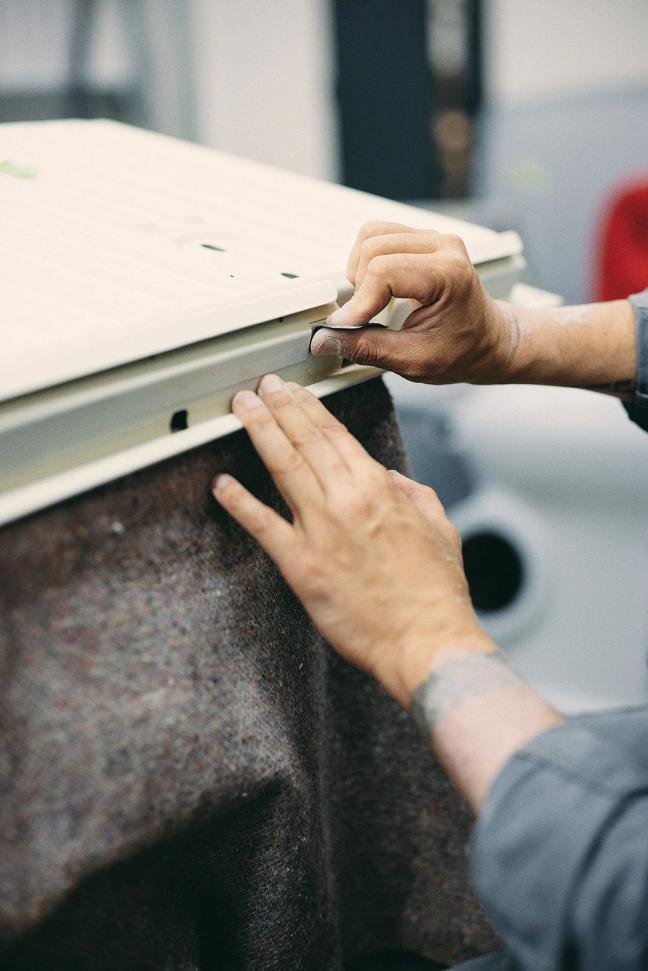
Since starting-up in 2018, Lunaz has honed its practice of techno-taxidermy. Today, in a fresh plant at Silverstone Technology Park, the brand has become one of the fastest growing in Britain. Founder David Lorenz recruits only the best, and his team takes classic cars — the XK120 among them — and gives them new ozone-friendly futures. But how do they retain, as Maynard put it, the “life and beauty” of a vehicle’s pasts?
“It’s all in the initial development of a new model,” explains Aiden McCafferty, Head of Client Experience at Lunaz. “We put in hours and hours at Millbrook Proving Ground, studying weight distributions and how the cars initially handle and drive under internal combustion. The key is understanding, fundamentally, what people love about these vehicles”.
And people really love these vehicles. When Lunaz made major headlines last year, thanks in part to a healthy investment from David Beckham, shouts of sacrilege were raised from grease-daubed garages and car clubs across the country. But the brand, McCafferty says, is confident in its logical, sustainable credentials — and has even invited groups of these die-hards and doubters to the plant to explain the full extent of Lunaz’s work.
“They came in with pitchforks,” he laughs, “but left feeling a lot happier”.
It’s a well-deserved approval, and a satisfaction shared by the brand. The now-filled order books opened in 2020, when only 13 people worked for Lunaz. Today, there are 170 employees, with plans to hire a further 230 by the end of the year. The new plant has settled into its ‘restomodding’ rhythm, and sits silently but confidently next to Silverstone Circuit. You can see Club Corner from the conference room.
“It’s a technological hub around here,” says McCafferty, “but also a talent hub. We’re in the right place”.
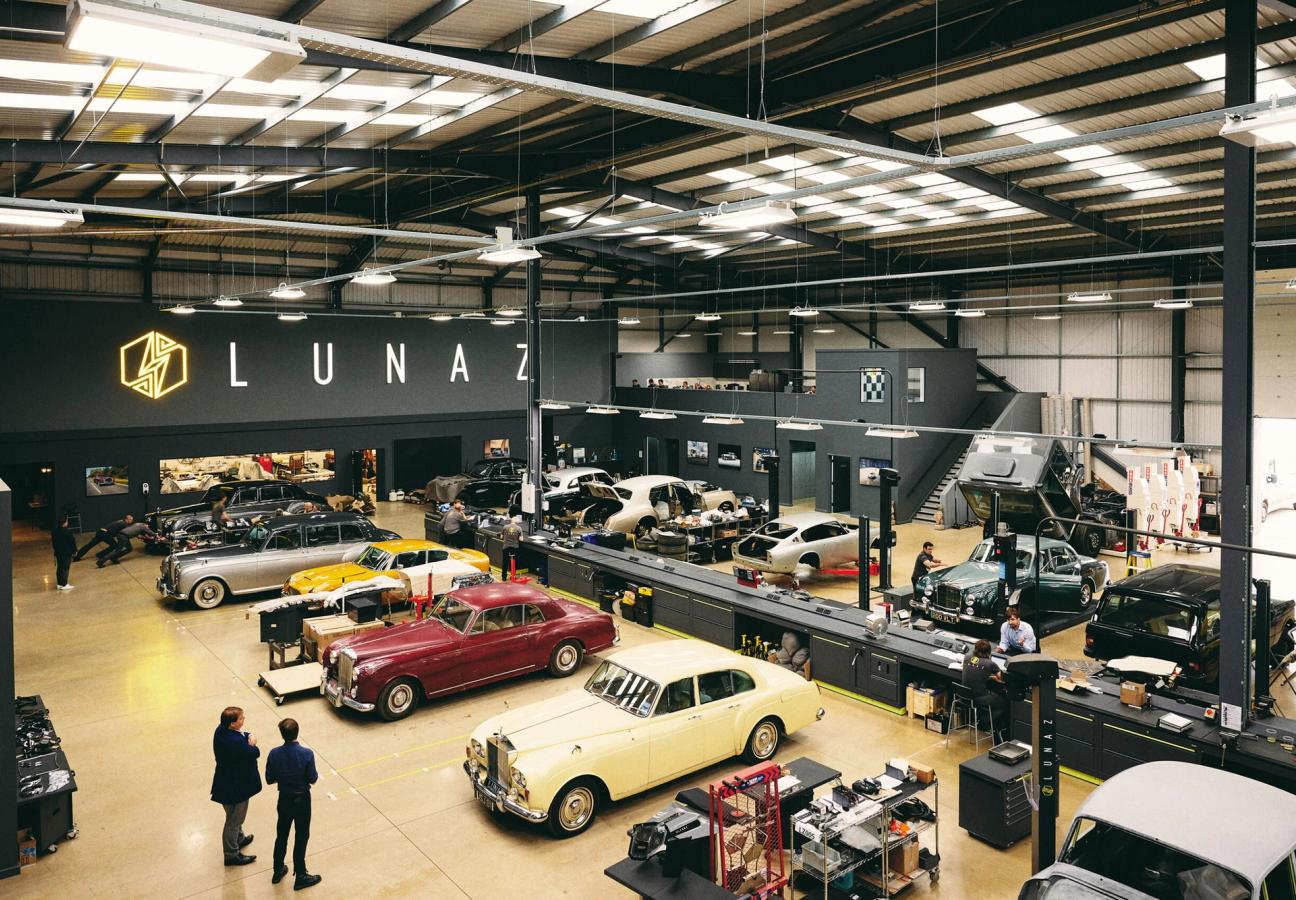
As are the cars. Currently, Lunaz is equipped to restore and electrify five big British marques. There’s the Jaguar XK120, and the XK140. From Rolls-Royce, the Cloud and the Phantom. Bentley models include the Continental S1, S2 and S3. And, rounding out the galvanic garage are the Range Rover Classic and the Aston Martin DB6.
There are presently 47 vehicles on the ‘shop floor’ — some lined up in the middle of the plant; others being welded in showers of sparks or primed for painting. But how did they get here?
“There are two ways,” explains McCafferty, nodding towards a newly-acquired Aston in ‘Bahama Yellow’. “Some people already own a car, a family heirloom. But four out of five customers come to us and simply ask us to deliver the end product. So we’ll source the car, strip it down and restore it to their specification.
“The first route, for me at least, is the most romantic. But, for those who want us to handle the whole process, we will take them on that journey. And that’s exciting. Because, for a lot of them, it’s the first classic car they’ve ever bought”.
“Also, every single car you see here is spoken for,” says James Warren, the Lunaz Group Commercial Director. “Demand is outstripping supply and, if you ordered a car today, you’d be looking at early 2024 for delivery. But that’s not an achingly long time to wait”.
Occasionally, Warren adds, customers will enquire about other cars. But, whether you’ve got a Jaguar E-Type or a Bugatti Atlantic, Lunaz only reserves two build slots each year for ‘special one-offs’. As such, most people select one of the more established models — with the XK120 being particularly popular.
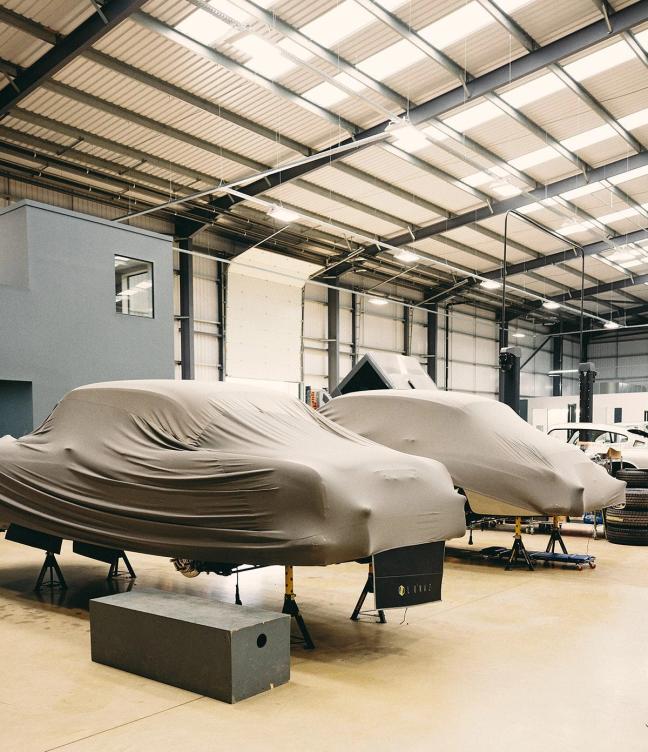
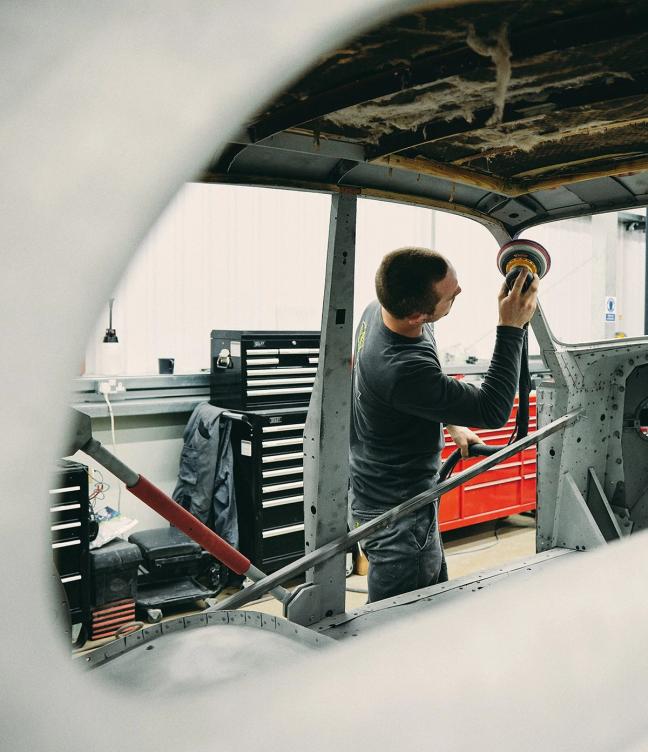
“We actually started with the XK120,” says Warren. “Because our founder, David Lorenz, loved the car. He calls it one of the most beautiful cars ever made”.
It’s a passionate sentiment — but then Lorenz is a passionate man. All gold-rimmed glasses and quiet composure, he comes off like a more eloquent, English Elon Musk; confident, collected and blessed with an unbridled belief in his business.
“Well the first milestone, for me, was getting that first Jaguar driving,” Lorenz says. “It was proof of concept. Proof of powertrain. Or perhaps the first milestone came before that. Because I’d spent a whole year travelling across the US and Europe trying to find the right person to set this up with. And then I met Jon Hilton”.
The meeting, Lorenz says, was purely coincidental. He met Hilton, a three-time F1 World Championship-winning engineer, on an Easyjet flight. They were both reading the same magazine. But Hilton turned down three pitches from Lorenz — a knock-back that may have discouraged lesser businessmen. But not Lorenz. Instead, the entrepreneur moved from London to Silverstone, won Hilton over with this display of sheer dedication, and they established Lunaz. The company is named after Lorenz’s daughter, Luna; the catalyst that spurred him onto this low-carbon crusade.
“I never wanted to be the guy who had children and started singing ‘Go green! Go green!’,” Lorenz laughs. “But then it sort of happened…”
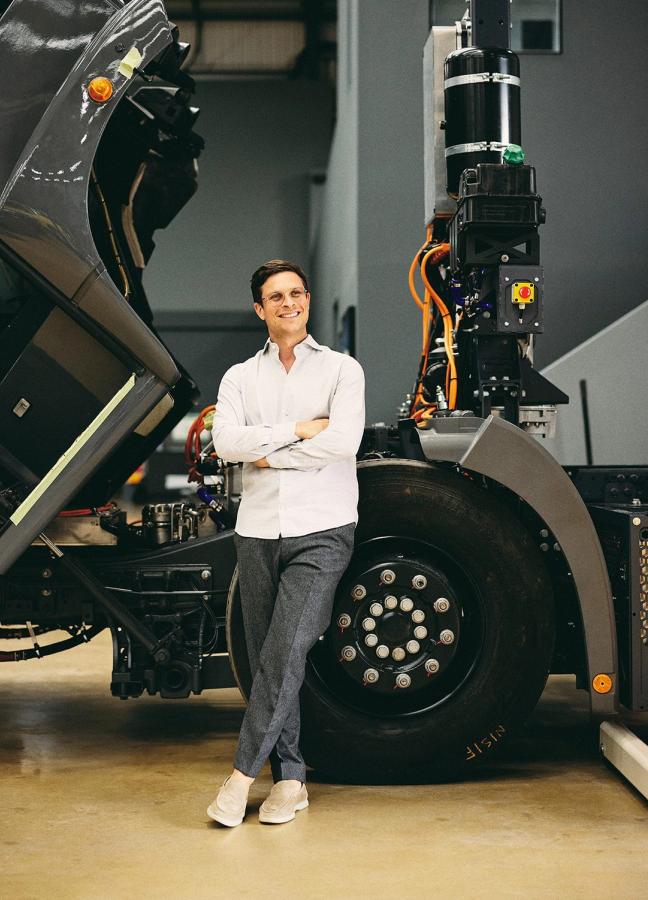
David Lorenz
Lorenz is fiercely committed to his cause. But his secret weapon in the battle against the “consistent churn” of the auto industry is not these electrified classics, but rather a fleet of upcycled refuse trucks. Across the road from this plant, Lunaz is opening a new facility which will electrify existing Mercedes-Benz Econic trucks. These will be sold to various municipal authorities in place of newer models.
“The automotive industry,” Lorenz explains, “is a multi-trillion dollar industry. And no-one is looking to upcycle vehicles. But we have to. Because there are two billion vehicles on this planet, and we need to transition in the cleanest, greenest and cheapest viable way possible”.
The trucks use the same modular electric powertrain that Jon Hilton designed for the classic cars, and this has earned the trucks a nifty nickname: ‘Bentley bin lorries’. The new Lunaz facility will upcycle 1,100 trucks every year, and this project promises to be both the real eco-legacy of Lunaz — and the most significant application of Hilton’s pioneering powertrain.
"It's a multi-trillion dollar industry, but no-one is looking to upcycle vehicles..."
“I’ve just been test-driving one of the cars,” says Hilton himself, overseeing work on the shop floor. “I was writing a bit of code to get the range meter working more accurately. Because that’s what I do — whenever we’ve got a knotty technical problem, or something we’re struggling to overcome, I’ll bring my years of experience to it, and try to fix it”.
Hilton’s involvement — a man who engineered Michael Schumacher’s Bennetton-Ford to F1 victory in 1994 — has steered Lunaz into the fast lane. In his role as Managing Director, he has tried to mimic the workings of a large company in a smaller firm. And, chief amongst these systems and strategies, has been creating a problem-solving process that can be implemented across the entire business.
“For instance,” explains Hilton, “there are half a dozen ways to strip paint off a car. And we tried chemical-dipping. We tried shot-blasting. We tried sanding it off. We tried loads of different things. And, eventually, using this problem-solving process, we found our solution; a combination of these methods.
“Because you can’t shot-blast the roof of a car,” he adds, “otherwise it’ll go all wavy. So we hand-sand the roof, which may be slow and painful — but it’s the only way to make it flat. And these are the sort of techniques we’re developing here”.
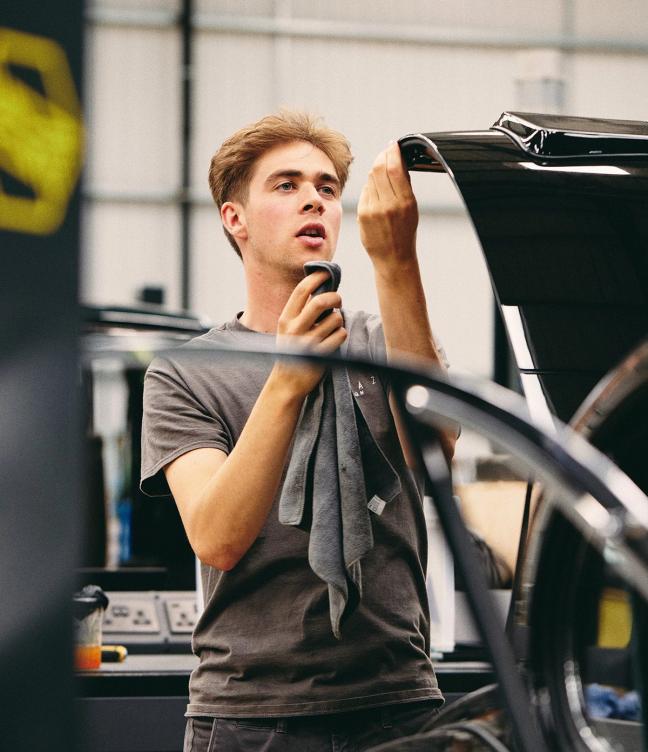
Greg Holmes
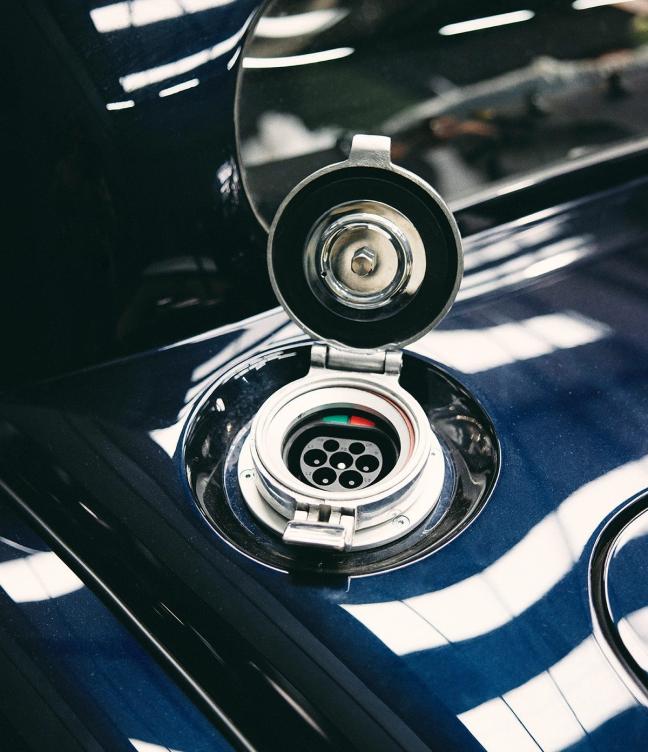
The technicians, who are tasked with developing and deploying these techniques, are incredibly impressive. Unruffled, engrossed in their work and with hands so steady they’d put C. J. Maynard’s to shame, each fabricator and fitter in the place has a specific job to do — and they know exactly how to do it. Greg Holmes is one of the youngest here, a trainee Heritage Engineering Technician who was enticed by the specialist nature of the role.
“That was the attraction for me,” nods Holmes, stepping away from a half-built XK120. “Because I’m learning what a lot of these guys would have learnt in the 1970s and 80s. But they learnt it when the cars were still relatively new! So, when they retire and leave the industry, there won’t be many people to carry those skills into the future. So, I want to. I just love old stuff”.
But not everything is old. While the majority of the components are removed, deep-cleaned and replaced — Ships of Theseus, these are not — the cars are filled with their fair share of new kit. The battery packs, boxed in black, must be fitted to sit comfortably under the bonnets, and there’ll be coolant pipes and fans fitted as in any other car. But Holmes’ favourite job (he’s currently being mentored in a ‘Small Classics’ team of four), is fitting the dashboards.
“Because this is an original-style dashboard,” he says, holding up the Jaguar’s classic console. “But everything’s been up-specced. There’s a proper wiring loom on the back, and modern gauges, but it’s all styled to look and feel original”.
That ‘look and feel’ is the tricky responsibility of Design Director Jen Holloway — and her endlessly resourceful team. Holloway, formerly of Aston Martin, works closely with clients to ensure their cars both look beautiful and stay true to the vehicles’ original characters.

Jen Holloway, far left
“And they each have their own personalities,” says Holloway. “The cars, I mean. They each have their own set of quirks that you have to work with, not against. For instance, from a space perspective, the XK is the smallest, so there’s a lot to fit in that space. On the other hand, the Rolls-Royce Phantom V has an incredibly voluminous interior. So the materials that could look beautiful in a smaller car could be a little too much in a larger environment.
“So we have to tease out of the car what it needs, and guide the client to what they need. That’s the balance”.
When a car comes to Lunaz, Holloway explains, it is 3D-scanned. And, after a consultation, five or six trim options will be presented to the client (including a ‘wild card’ option). As part of the electrical upgrade, 14 new switches must be housed, as well as a screen. In early cars, Lunaz offered ‘fake noise’ as an add-on, to imitate the burble of an internal combustion engine. Most people opted in; almost everybody turned it off.
It’s not a surprise. Although classics, these are a new breed of vintage motor. And, like the clean-running electric powertrain, sustainability is a thread that Holloway stitches into every interior. Eco-fabrics, including carpets woven from reclaimed fishing nets, are used in the cars. And Lunaz refuses to waste neither time nor energy on developing new colours for leathers, textiles or carpets.
“There are literally tens of thousands that have been created already,” says Holloway, “so we don’t need to create something one per cent different just to say it’s ours”.
Exterior paints are different. As the original pigments were generally lead-based, clients are invited to choose and name their own custom shades — Holloway’s favourite is ‘Cinereous Grey’. And this modern paint technology, which the designer says has “moved on a million years”, is one of the reasons that Lunaz-restored classics look so sharp.
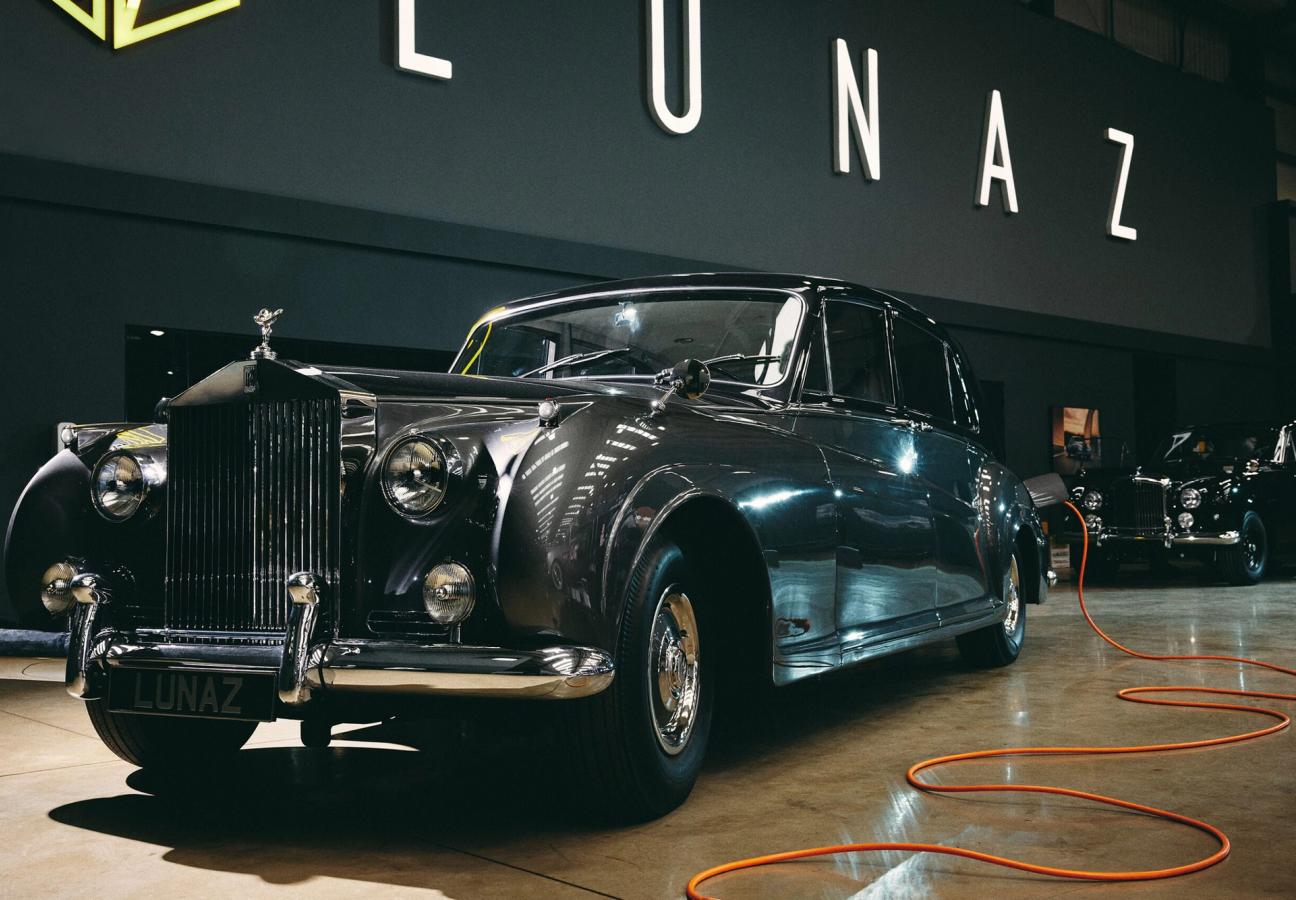
“We also have an amazing body and restoration team,” says Holloway. “And they’ll find original lines that have been lost through years of filler work and many coats of paint. They’ll beautifully take these cars back to the original tight creases and forms.
“It’s not that they come in soft and blobby,” she adds. “But, over time — and especially the 1990s era of restoring your car in a slightly cowboy-y way — restorations didn’t take the cars back far enough. Part of the beauty here is going back to these cars’ original forms, and making them look how they’re actually meant to”.
A key part of respecting these classics, Holloway says, is to avoid any loud Lunaz badging or branding. The cars may be subtly stamped with the Lunaz logo, or fitted with a removable enamel Lunaz grille badge, but they otherwise look factory-fresh and untampered on the outside. And, with all that techno-taxidermy beneath the cars’ bonnets — mechanical upgrades including power-steering, uprated brakes and new suspension — Lunaz is unlocking the true promise of these classics; at long last realising and releasing the potential they have held for decades.
“And with cars like the Jaguars and the Aston,” says Aiden McCafferty, “the clients have been absolutely convinced by the driving dynamics. They don’t mind the quiet — because the cars are sharper, quicker, smoother. As for the Rolls-Royces and the Bentleys? They were originally engineered to be silent-running. So, for these models especially, but with every Lunaz car, there’s only gain; nothing lost”.
This article was taken from the Summer 2022 issue of Gentleman’s Journal. Take a look inside the latest magazine here…
Become a Gentleman’s Journal member. Find out more here.

Become a Gentleman’s Journal Member?
Like the Gentleman’s Journal? Why not join the Clubhouse, a special kind of private club where members receive offers and experiences from hand-picked, premium brands. You will also receive invites to exclusive events, the quarterly print magazine delivered directly to your door and your own membership card.


